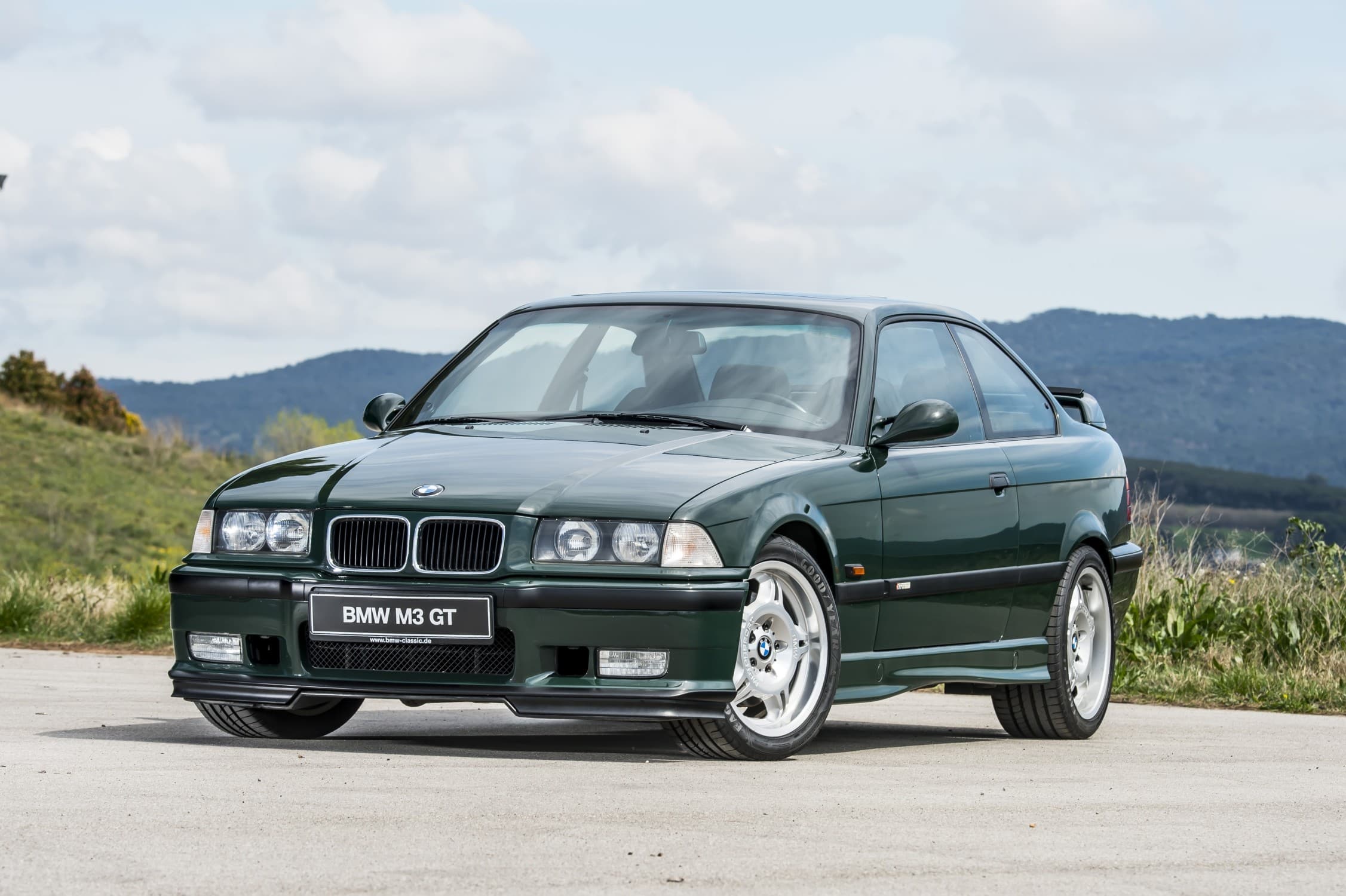Between 1992 and 1999, BMW M produced the second generation M3 E36, the successor to the M3 E30. The new M3 had to target a wider target group than its predecessor without losing its motorsport DNA. In this context, in 1995, BMW M engineers created a more powerful and high-performance limited production BMW M3 GT, which was launched for DM 91,000 (€46,514). The limited edition model was also presented a few months before the M3 E36 underwent minor changes.
BMW M3 GT’s optimised S50B30 engine
Under the bonnet of the M3 GT was the S50B30 3.0-litre inline six-cylinder engine introduced in the earlier M3 E36 models. Technical features included six single throttle valves and a newly developed camshaft control called VANOS. This innovation resulted in improved fuel injection and high torque: 323 Newton metres at 3,900 rpm, making it the best power unit of any naturally aspirated engine.
The engine already featured the short intake manifold of the 3.2-litre S50B32 engine, which was fitted in later models after a minor change at the end of 1995; the 264° camshaft increased power levels from 286 hp in the M3 series to 295 hp . This translated into an output density of 72.2 kW (98.7 hp), an excellent figure for the 1990s. This power unit is considered by many enthusiasts to be a masterpiece of engine building: the four-valve engine already produced maximum power output from idling that rivalled that of its predecessor. From idling, the four-valve engine delivers the same power as its predecessor at maximum level, enabling the M3 Special Edition to reach 100 km/h in just 5.9 seconds. Spontaneous throttle response at high revs is experienced at every turn, and full power is reached when the camshaft reaches 7,000 rpm. A sound typical of BMW M inline six-cylinder engines of the time develops.
Special edition in British Racing Green
All 356 cars produced (including five pre-production models) were painted in Code 312 British Racing Green. This rare special edition can therefore essentially be identified by its paintwork. Also specially equipped were front and rear spoilers, aerodynamically optimised mirrors and M double-spoke forged aluminium wheels in 7.5J x 17″ front and 8.5J x 17″ rear, which are only available on the M3 Series. The tyre size was 235/40 ZR17, and in the mid-90s the car was a sight to behold just by being parked. The front indicators also differed from the standard model, changing from yellow to white. The doors, which were indistinguishable from the standard model, were also made of aluminium and lighter.
In the colour-coordinated interior, the Amaretta Sport seats in Mexican Green Nappa leather and the high-quality interior trim in carbon stand out. The GT model does not have a four-door limousine, as is the case with the BMW M3 E36 in general, but all 356 units are two-door coupes.
Rare model
The BMW M3 GT was only sold in Germany, making it rare for international fans and collectors. According to estimates, as of 2020 there will be around 80 E36 M3 GTs in Germany, with the rest scattered across Sweden, the UK, the Netherlands, Norway, Italy, Portugal and Turkey. A few M3 GTs also exist in Japan.
| Production | 1995 |
| Units | 356 |
| Colour | British Racing Green |
| Engine | S50B30 3.0 litre inline 6-cylinder engine |
| Max. output | 217 kW (295 hp) |
| Max. torque | 323 Nm at 3,900 rpm |
| 0 – 100 km/h | 5.9 seconds |
BMW M3 LTW – US-specification M3 GT
For the US market, M developed another version of the BMW M3 GT, the BMW M3 LTW, of which 126 were built between August and October 1995; LTW stands for ‘lightweight’, and as the name suggests, it was a lightweight vehicle. It was characterised by a drastic reduction in equipment, with air conditioning and a sunroof, as well as radio and alarm systems, not being fitted. Thinner carpets and reduced insulation in the interior have kept the vehicle’s weight under 1,350Kg. The slim M3 LTW’s improved M50B25 engine, from the BMW 325i, produces 243 hp, slightly lower than the German-spec S50B30. In contrast to the European version in British Racing Green, the US-spec M3 LTW was supplied only in gleaming Alpine White with colour code 146. The Chequered Flag decoration on the bonnet and boot, in typical M colours, also helped to identify the original model.
The most famous owner of this BMW M3 LTW was Hollywood actor Paul Walker, who died in 2013. An avid sports car enthusiast, Walker’s car collection included five of these rare lightweight coupes.
FIA GT Series homologation model
The BMW M3 GT’s dynamic, driver-oriented set-up has one starting point. This M car is a homologation model of the FIA GT Series, Division II and IMSA GT Series, so the motorsport roots of this special edition were there from the very beginning.







